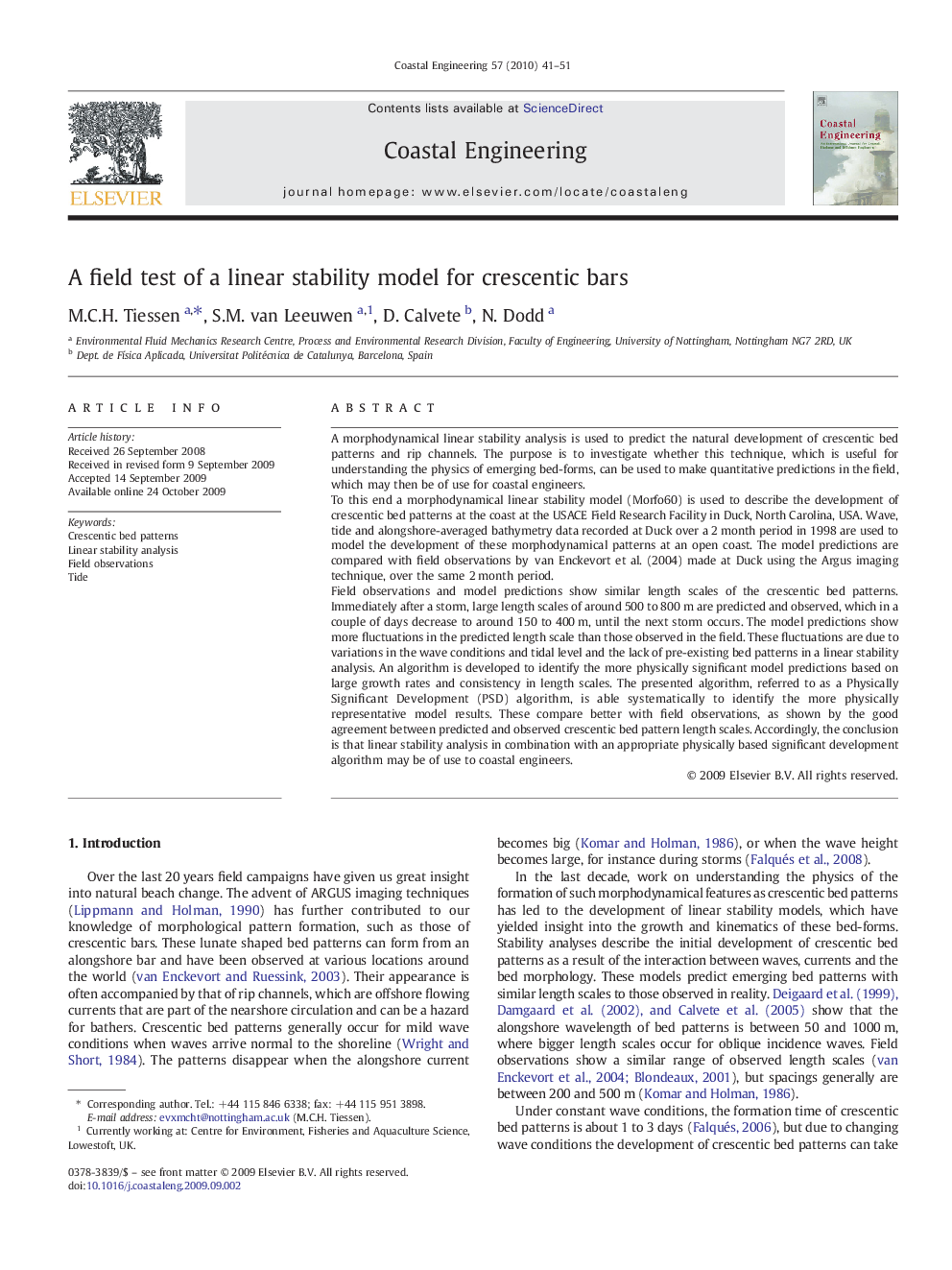| Article ID | Journal | Published Year | Pages | File Type |
|---|---|---|---|---|
| 1721460 | Coastal Engineering | 2010 | 11 Pages |
Abstract
Field observations and model predictions show similar length scales of the crescentic bed patterns. Immediately after a storm, large length scales of around 500 to 800Â m are predicted and observed, which in a couple of days decrease to around 150 to 400Â m, until the next storm occurs. The model predictions show more fluctuations in the predicted length scale than those observed in the field. These fluctuations are due to variations in the wave conditions and tidal level and the lack of pre-existing bed patterns in a linear stability analysis. An algorithm is developed to identify the more physically significant model predictions based on large growth rates and consistency in length scales. The presented algorithm, referred to as a Physically Significant Development (PSD) algorithm, is able systematically to identify the more physically representative model results. These compare better with field observations, as shown by the good agreement between predicted and observed crescentic bed pattern length scales. Accordingly, the conclusion is that linear stability analysis in combination with an appropriate physically based significant development algorithm may be of use to coastal engineers.
Related Topics
Physical Sciences and Engineering
Engineering
Ocean Engineering
Authors
M.C.H. Tiessen, S.M. van Leeuwen, D. Calvete, N. Dodd,
